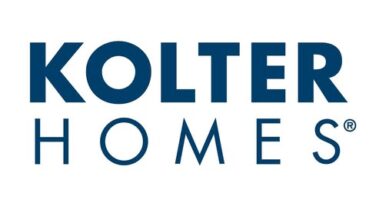In an era where active adult communities are evolving beyond the traditional retirement village model, Kolter Homes is leveraging extensive customer research and flexible design options to c...
How DePaul's Institute for Housing Studies Shapes Chicago's Housing Policy Through Data




“We’re an Applied Research Center, and that means all our work is intended to inform practitioners making decisions about housing policy, investment, and strategies affecting neighborhoods,” explains Geoff Smith, Executive Director of the Institute for Housing Studies (IHS) at DePaul University.
In Chicago’s complex housing ecosystem, where affordability challenges vary dramatically by neighborhood and market forces constantly evolve, the Institute has established itself as an essential resource connecting academic research with real-world applications. Their work demonstrates how data-driven analysis directly informs housing solutions in America’s third-largest city.
From Campus to Community: The Applied Research Model
Unlike traditional academic research centers focused primarily on scholarly publications, the Institute operates on what Smith calls an “applied research model.” This approach prioritizes practical applications and responsive analysis of emerging issues faced by housing stakeholders across Chicago.
“This requires strong connections to the practitioner community, building relationships and trust,” Smith explains. “Knowledge from these relationships informs our research questions and agenda. They’re willing to talk to us because we provide data they can use in their work.”
This relationship has positioned the Institute as a crucial intermediary between academic knowledge and neighborhood-level action. When community organizations identify troubling housing trends, they often turn to IHS for data verification and analysis.
Smith offers an example: “When a community-based organization working in Albany Park sees small apartment buildings being converted into single-family homes—which threatens affordability—they call us and ask, ‘Can you provide data that helps us understand the scale of this issue?’ That data helps them communicate with the city, funders, and media, allowing them to develop a response.”
This approach ensures the Institute’s research remains relevant to current market conditions while building lasting relationships with housing stakeholders throughout Chicago.
Challenging Housing Orthodoxies: The “All of the Above” Approach
One of the Institute’s most valuable contributions to Chicago’s housing discussion is its data-informed perspective that challenges simplistic narratives about affordability solutions.
“If you follow housing discussions online, there are definitely camps,” Smith notes. “Some say ‘we must build everything—more construction will solve all problems.’ Others say ‘we need to protect existing housing so residents don’t get displaced.’ For some reason, hard lines get drawn between these conversations.”
The Institute’s research reveals a more nuanced reality: effective housing policy requires multiple concurrent strategies operating across different timelines.
“From my perspective, it requires all of the above, rather than one strategy being the right one,” Smith emphasizes. “You need to build more housing because as demographics change, the way people use housing changes, and you need a responsive housing stock meeting those evolving needs.”
However, the Institute’s neighborhood-level data also highlights why simply building more housing isn’t an immediate solution for communities experiencing gentrification pressures.
“In a neighborhood like Logan Square, developers need to see demand reach a certain point before they’ll build new housing. Once they decide, it takes years to acquire land, get approvals, secure financing, and complete construction,” Smith explains. “Meanwhile, investors are quickly converting smaller buildings into single-family homes or upgrading existing rentals. The larger developments that might eventually reduce pressure on the market citywide work differently at the neighborhood level.”
This disconnect between rapid market changes and slower housing development cycles underscores why preservation strategies remain equally important in the Institute’s analysis.
Innovative Solutions: Community Land Trusts and Beyond
The Institute’s research has helped evaluate numerous housing affordability strategies, providing data-backed assessments of their potential impact in Chicago’s diverse neighborhoods.
One recent research endeavor focused on Community Land Trusts (CLTs), a topic that emerged directly from community concerns about preserving affordability in gentrifying areas. As Smith explains, this research was “part of a longer body of work on understanding market conditions in Chicago neighborhoods and how those conditions might inform policy conversations around housing affordability.”
“CLTs fall into the preservation of existing affordability category,” Smith explains. “The model allows for long-term affordability by separating the value of land and the improvement. If you’re in the Land Trust, you’re essentially permanently affordable—at least for as long as we’re all going to be alive.”
The Institute’s research identified both strengths and limitations of this approach. While CLTs create lasting affordability in high-pressure markets, scaling remains challenging. “The Community Land Trust in Logan Square started about three or four years ago in response to market pressures. But getting enough properties in the CLT to make it impactful requires time and resources,” Smith notes.
Other innovative strategies the Institute has evaluated include:
- Inclusionary zoning policies that leverage market demand for new development to create revenue for affordable housing
- Impact fees on demolitions or conversions that reduce affordable housing stock
- Auxiliary Dwelling Unit (ADU) policies that add housing supply through basement units and attic conversions on existing properties
- Parking requirement reforms that can reduce development costs and enable more housing production
- Commercial-to-residential conversions that repurpose underutilized office and retail spaces for housing
The Institute’s analysis helps policymakers understand which tools work best in specific neighborhood contexts and market conditions.
Real-Time Response to Market Changes
Perhaps the Institute’s most valuable contribution is its ability to track and analyze rapidly changing housing conditions, especially during periods of economic volatility.
“Our work is nimble and responsive to emerging and changing conditions,” Smith explains. “In the last five years, we’ve seen dramatic economic changes which manifest in housing market shifts and policy changes that affect neighborhood affordability and investment in sometimes unanticipated ways.”
This real-time data helps stakeholders make informed decisions during market shifts. “That’s why we see ourselves as a key partner in these conversations. We provide data that can inform these emerging issues relatively quickly.”
The Institute serves diverse housing stakeholders beyond government agencies. “Community partners, nonprofits, foundations—anyone trying to make a difference in housing affordability needs data to help them know how to be most impactful,” Smith emphasizes.
The Path Forward: Data-Informed Housing Solutions
As Chicago continues addressing housing affordability challenges that vary dramatically by neighborhood, the Institute for Housing Studies demonstrates how academic institutions can directly contribute to real-world solutions without sacrificing analytical rigor.
By maintaining strong relationships with practitioners, responding to emerging market trends, and evaluating diverse policy approaches, the Institute has become an essential resource in Chicago’s housing ecosystem.
In a field often characterized by polarized debates, the Institute’s nuanced, data-driven approach offers a productive way forward—acknowledging the complexity of housing markets while providing actionable insights to those working on the ground.
For Smith and his team, the mission remains clear: ensuring housing research directly informs decisions that shape Chicago’s neighborhoods, creating a more equitable housing system for all residents.
Similar Articles
Explore similar articles from Our Team of Experts.


In Miami’s luxury real estate market, differentiation is everything. While many brokers tout their market knowledge or networking capabilities, Cristiano Piquet, founder of Piquet Real...


As institutional real estate investors navigate an increasingly complex regulatory and operational landscape, IQ-EQ, a leading global investor services provider with over $750 billion in ass...


When Jeff Cheung attended Harvard Graduate School of Design, he wasn’t just pursuing another degree – he was searching for answers to California’s escalating housing crisis. To...


When Luis Aurelio Diaz returned to Colombia in 2003 to take the helm of his father’s real estate development company, he faced a stark reality. The Colombian economy was recovering fro...




